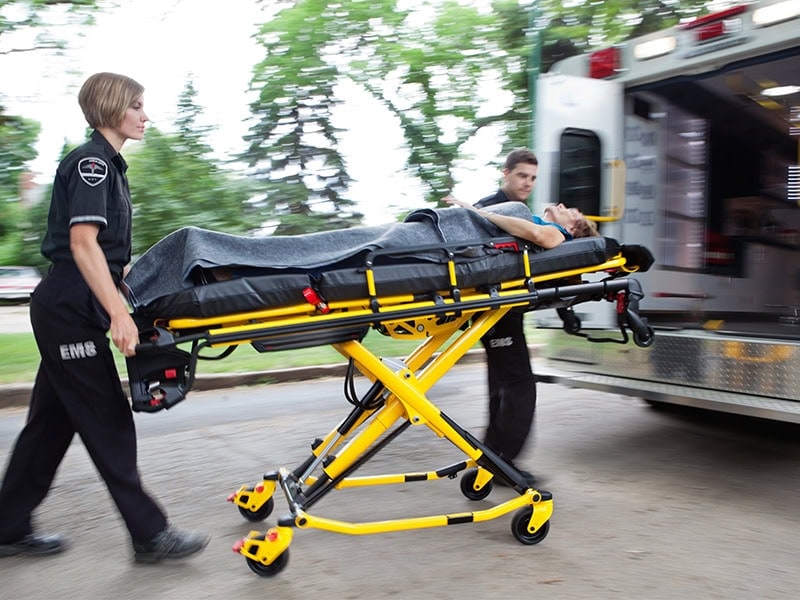Meta Description: Are you confused about which type of stretcher to choose? This article will discuss different types of EMT stretchers and their uses. Let’s take a look!
| Introduction | Common Types of EMT Stretchers | How to Select the Right Stretcher? | Training and Maintenance | Wrapping It Up! |
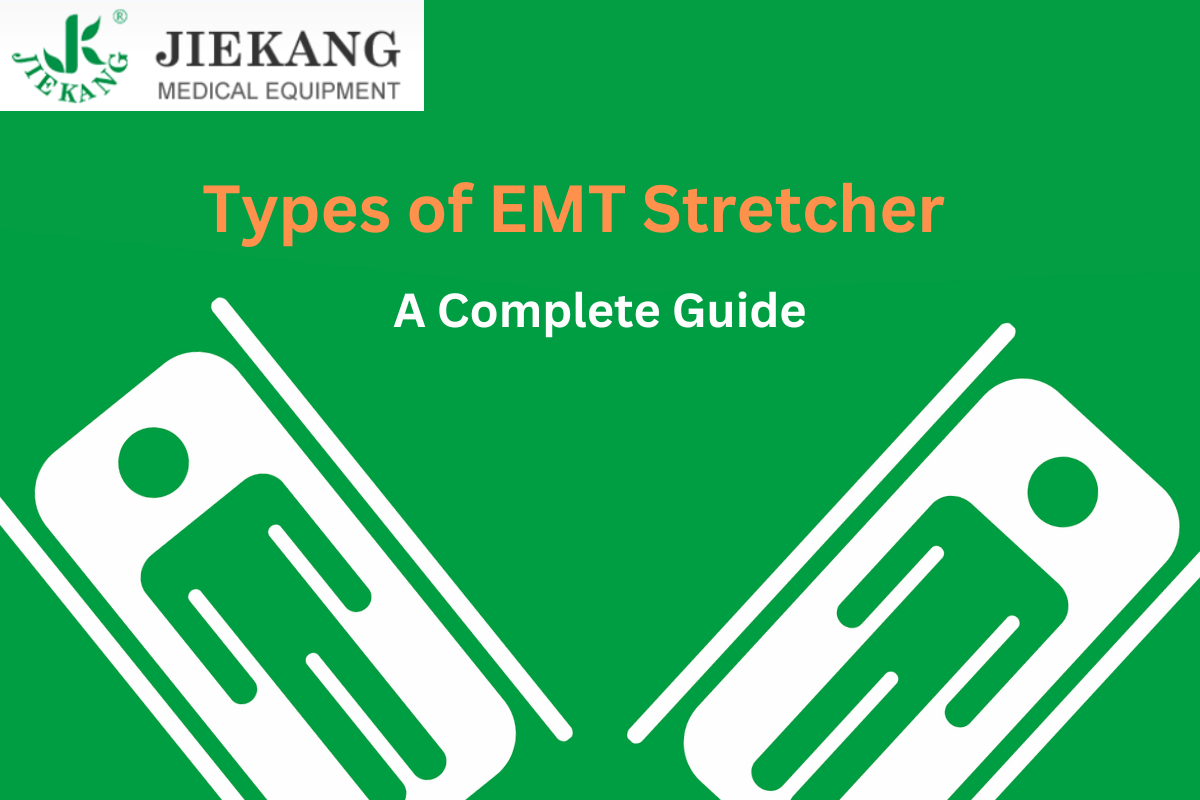
Have you seen stretchers or heard about them? Did you know they are available in multiple types? Yes, that’s true. We cannot carry all patients on the same stretcher type. Stretchers are used manually carrying someone in ambulances, hospitals, or remote rescue operations.

It’s a way to transport patients safely to the hospital or medical centre. When you decide to get a stretcher, you will be confused by the options. The modern medical stretchers come in multiple types, so you must understand their distinguishing features.
This article looks at the common EMT stretcher types and their uses. Keep reading to learn how to select the best types of emergency stretchers!
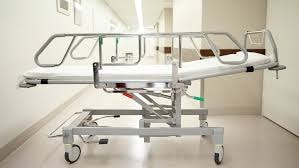
Common EMT Stretcher Types
Medical stretchers are available for various emergencies. Their main function is transporting the patient, and all types are somewhat different. Stretchers allow the patient to be moved faster than manually carrying them, and they keep the patient safe.
Emergency stretchers will prevent movements during the transport of patients to avoid any further injury or risks. You may have to transfer the patient from one stretcher to another. Let’s understand these differences in emergency stretchers to guarantee the best possible patient care.
1. Wheeled Stretchers
Wheeled stretchers are a very common in emergency medical services. They are normally used to transport a patient over a pavement. Their plus point is the less manual lifting it needs. It gives rigid support to opposite sides of the patient to keep him stable.
The adjustable features give maximum patient comfort. People use it along with ambulance systems to prevent further injury. Hence, they make patient transport hassle-free and decrease strain on emergency responders.
Plus Points of Wheeled Stretchers
- Easy to roll on flat surfaces
- Adjustable height for better access
- Less pressure on medical staff
2. Ambulance Stretchers
Ambulance stretchers, as the name suggests, are emergency stretchers used in ambulances. They are highly specialized with ultra-modern features for sensitive patient care.
The patient’s head is kept in place by adjustable headsets, and the patient’s body is stabilized with safety straps. You can even support medical equipment, which means that some life-saving procedures can continue en route to the hospital or medical facility.
Ambulance stretchers target patient comfort and medical productivity. Hence, patients get the best care during rescue operations.
Plus Points of Ambulance Stretcher:
- Smooth patient transfer into ambulances
- Adjustable height for easy loading and unloading
- Safety straps for secure transport
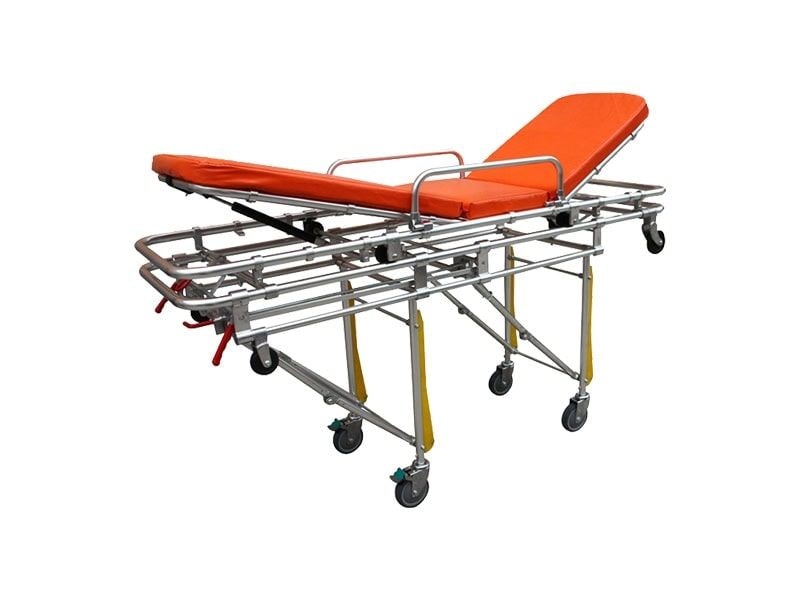
3. Basket Stretchers
Basket stretchers are a part of challenging rescue operations, such as mountain rescues or in confined spaces. They can even work for water retrieval.
It is made from durable materials that are resistant to wear and corrosion. Plus, they are suitable for vertical lifting in rescue operations. The sturdy materials of these stretchers guarantee stability and safety in extreme conditions. Furthermore, straps are attached on opposite sides of the metal frame and clumped together.

They are are mostly used with scoop stretchers for the best outcomes during harsh conditions. They are excellent for their versatility in dangerous environments.
Plus Points of Basket Stretchers
- Durable and sturdy design
- Suitable for rough terrain
- Great for rescue operations
4. Portable and Foldable Stretchers
Portable stretchers or collapsible stretchers are lightweight and easy to use. Thus, they are perfect for scenes that demand quick response times. Their bonus point is that they are foldable for compact storage and transport. This is why they are often called flexible stretchers. Wood, canvas, or aluminium are mostly used for their construction.
These modern portable stretchers are constructed to carry patients over rough terrain. They are used in military operations and rescue missions. This convenience comes without compromising functionality. This is a vital part of fast-paced emergencies where patient restraints are critical.
Plus Points of Portable and Folding Stretchers
- Lightweight and easy to carry
- Compact design for quick storage
- Used for remote or hard-to-reach areas
Pro Tip: Keep them easily accessible in emergency response kits for rapid utilization.

5. Scoop Stretchers
Scoop stretchers are introduced for patients who have spinal or limb injuries. They consist of two spine board on opposite sides, made of a thick plastic material.
Typically, as on a long spine board, the torso is secured with straps first, then the abdomen or waist, and then the lower body. Scoop stretchers allow for the safe loading of patients without lifting their bodies.
Plus Points of Scoop Stretchers
- Minimizes patient movement
- Ideal for injuries in the spinal cord
- Adjustable and lightweight
6. Orthopedic Stretchers
Orthopedic stretchers are also a specific type for spinal injuries. They are used along with spinal boards to provide the best immobilization and support. Spine boards firmly hold the patient’s body in an aligned position.
Spine boards prevent movement during transfers as secure straps make the patient stable. They keep the head and body of the patient in place.
Plus Points of Orthopedic Stretchers
- Splits into two halves for easy lifting
- Minimizes movement of the patient by spine boards
- Ideal for spinal injuries

7. Bariatric Stretchers
Bariatric Stretchers are different from the standard stretchers as they are built with a reinforced metal frame. Plus, it has a huge surface area to provide stability and support during patient transfers. They have modern features such as adjustable height and side rails. Modern types also contain hydraulic or systems for easy of movement.
Bariatric stretchers are easily deployable during emergency situations. They include additional features like IV stands and storage areas. Furthermore, they also have higher weight-lifting capacities: they can even support over 700 pounds. Some of them have padded surfaces and ergonomic designs that decrease pressure points.
Plus Points of Bariatric Stretchers
- Designed for heavier patients
- Wider and stronger frame
- Ensures safe and comfortable transport

8. Stair Chair Stretcher
Stair chair stretchers are designed for safely lifting patients over a staircase. Stairchairs have great maneuverability in tight and confined spaces. It can carry patients up and down stairs during emergency situations.
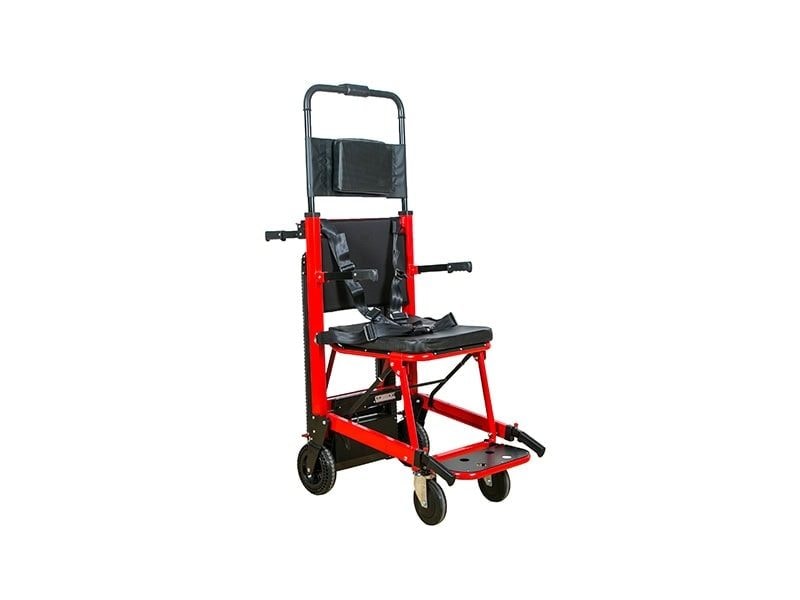
This type of EMT stretcher has strong handles and sometimes even tracks or wheels. Its compact and lightweight design is ideal for narrow stairs and multi-story buildings. They are commonly used by emergency medical teams, ambulance services, and fire rescue squads to handle challenging situations and prevent further injury.
Plus Points of Stair Chair Stretcher
- Lightweight and easy to maneuver
- Foldable for compact storage
- Provides stability on steep or narrow staircases
How to Select the Right Stretcher?
If you are a health professional who need a stretcher to help a patient, you cannot just grab the nearest option. Though they have the same purpose, many differences still exist. You must understand the situation, and the patient to make a wise decision.
- Think About the Environment: Different environments demand different stretcher designs. Rough terrain will demand durable stretchers, while indoor transfers are better for wheeled or ambulance stretchers. Rescuers need a stair chair stretcher for stairs.
- Evaluate Patient Condition: The type of injury dictates the stretcher choice. For spinal, you need an orthopedic or scoop stretcher that prevents further harm during movement. Use adjustable headrests and straps to keep the head in place.
- Consider Responder Skills: Some modern rescue stretchers have complex features and need specialized training. Make sure that responders are familiar so they can position the body easily.
- Check Weight Capacity: Every stretcher has a weight limit, though some may be flexible. Overloading the stretcher with obese patients would bring risks to life. It can cause equipment failure and compromise patient safety.
- Budget Restrictions: High-end stretchers that have advanced features will come at a huge cost. Portable and folding stretchers are a more budget-friendly alternative. Different types have variable prices, so decide accordingly.
The best stretcher is the one that fulfils the requirements of both the patient and the people handling it. Think ahead and assess your emergency to make a wise decision.
| Stretcher Type | Used For |
| Wheeled Stretcher | Smooth surfaces |
| Folding Stretcher | Tight spaces |
| Basket Stretcher | Rough terrains |
| Scoop Stretcher | Spinal injuries |
| Stair Chair Stretcher | Trauma cases |
| Spine Board Stretcher | Narrow spaces |
Training and Maintenance of EMT Stretchers
For an efficient and long term use, the stretcher must be maintained properly. Because it has to handle sensitive conditions such as limb injuries. Even the most advanced model won’t be effective if the team using it isn’t prepared. Emergency drills are helpful as they allow teams to build muscle memory. Furthermore, Modern stretchers with modern features like hydraulic lifts or monitoring devices need specialized training.
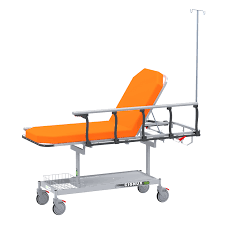
A well-maintained stretcher is a reliable one. Regular inspections keep everything running smoothly. The large wheels and locking mechanisms must be checked regularly, especially if they are used to lift obese patients.
After every use, stretchers should be cleaned and sanitized. Infections spread easily, and contaminated medical equipment itself is a serious risk. Mechanical parts like wheels and joints should also be checked for wear and tear. Always replace damaged components as soon as possible to guarantee safe transport. Make sure that the legs and brakes are properly engaged.
Wrapping It Up!

Choosing the most suitable EMT stretcher from different types depends on the equipment, the emergency, and patient requirements. Multiple types are available, including ambulance stretchers, baskets, and portable models. Each type has a distinguished purpose that will deliver effective emergency care.
Hence, you should invest in high-quality stretchers for effective patient care. Jeikang Rescue provides exceptional quality stretchers that can assist you in emergency responses. You can get in touch with our professionals for further guidance.

